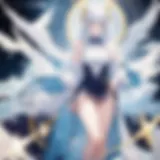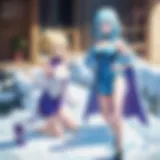The Complex Universe of Manga and Manhwa Explained
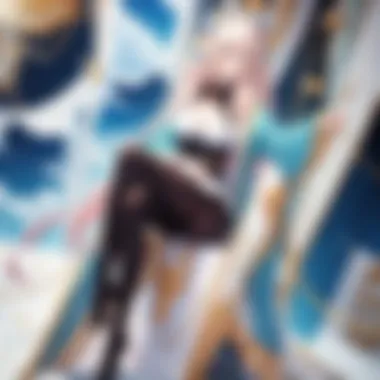

Intro
Manga and manhwa have become pivotal forms of storytelling in today's global entertainment scene. Their emergence has reshaped how narratives are constructed and consumed, transcending cultural barriers. Understanding their origins and the distinctions between them not only enriches the appreciation of these art forms but also shines a light on their evolution and growing popularity.
This article aims to explore various dimensions of manga and manhwa. It will delve into their historical roots in Japan and Korea, discuss the stylistic nuances that set them apart, and analyze their cultural significance. Additionally, a spotlight will be cast on the rise of digital platforms that facilitate access to these mediums, providing an outlet for creators and fans alike.
As we journey through the complex universe of manga and manhwa, key themes will emerge, revealing the intricate layers of narratives and the genres that have captivated the imagination of millions. Whether you are a long-time enthusiast or a newcomer, this exploration will offer insights and perspectives that enhance your understanding of these dynamic forms of visual storytelling.
Manga: Defining Characteristics
Manga serves as a powerful medium that transcends mere entertainment. Through its unique blend of artistic expression and narrative depth, it encapsulates the cultural nuances and societal themes of Japan. Understanding its defining characteristics is crucial for anyone looking to appreciate the full essence of this art form. By examining aspects such as historical context, artistic styles, and narrative structures, readers gain a clearer perspective on what sets manga apart from other forms of storytelling.
Historical Context
The history of manga dates back to the 12th century, with roots stemming in early Japanese artistic and literary traditions. However, the modern form began to take shape during the Meiji era in the late 19th century. Known as the “birth of modern manga,” this period saw the introduction of Western art styles and storytelling methods, influencing the evolution of manga as we know it today. Japanese artists began to incorporate these new elements, leading to increased popularity and a unique identity.
World War II also played a significant role in the evolution of manga. Post-war, the genre experienced rapid growth in both themes and styles, responding to societal changes and the emotional scars left by the conflict. Notable figures such as Osamu Tezuka helped pave the way for the modern manga industry. His works not only entertained but also tackled complex themes, appealing to a wide audience.
Artistic Styles
Manga is known for its diverse range of artistic styles, which can vary significantly from one series to another. The visual elements are integral to storytelling, influencing both character design and environmental interaction.
- Character Design: Characters are often designed with exaggerated features. Large, expressive eyes are common, allowing for the conveyance of a wide range of emotions. This has become a hallmark of the medium, enhancing engagement with readers.
- Panel Layouts: Manga employs a distinctive panel arrangement, often breaking traditional boundaries. Artists utilize space creatively, which influences pacing and flow. The reading direction, typically from right to left, adds to a unique reader experience.
- Genre Variability: Different genres exhibit varying styles. For example, shonen may have more dynamic action sequences, while shojo might embrace softer art focusing on emotional expressions.
Narrative Structures
Narrative structures in manga reflect a complexity that may not be immediately apparent. Each story is often laid out over multiple chapters, allowing for intricate plots and character development.
- Serialization: Most manga is serialized in magazines. Chapters are released on a weekly or monthly basis, allowing for ongoing story arcs. This format often creates an anticipation that keeps readers engaged.
- Character Arcs: Character development is a hallmark of manga storytelling. Protagonists often go through significant growth, facing various challenges that contribute to personal evolution. This depth can resonate with readers, making the characters relatable.
- Themes: Common themes in manga range from friendship and determination to more complex societal issues. This thematic richness allows readers to explore various facets of life through the lens of fiction.
"Manga is more than just comics; it's a reflection of cultural narratives and evolving societal values."
By understanding these defining characteristics, readers can appreciate the intricacies of manga. This appreciation invites a deeper engagement with the stories and themes, ultimately enriching the overall experience that manga provides.
Manhwa: Understanding the Form
The exploration of manhwa represents a significant aspect of understanding the larger narrative around visual storytelling in the form of comics and graphic novels. This section, focusing on manhwa, provides an essential contrast to its Japanese counterpart, manga. Recognizing the uniqueness of manhwa entails an appreciation of its cultural influences, distinctive features, and the recurring themes that shape its narratives. By understanding the form of manhwa, readers gain insights not just into the stories themselves, but also into the societal and cultural currents that influence them.
Cultural Origins
Manhwa has its roots deeply embedded in Korean culture. The history of manhwa dates back to the early 20th century, with influences from traditional Korean art and storytelling. During the Japanese occupation of Korea, the comics began to flourish as a means of cultural expression and resistance. The post-war surge in national identity further propelled manhwa as a prominent art form within South Korea.
Manhwa has been influenced by Western comics, particularly in visual presentation and storytelling. As a result, it has adapted various styles that blend both Eastern and Western sensibilities. Understanding these cultural origins offers important context, emphasizing how manhwa has evolved from local stories to a global phenomenon.
Distinctive Features
Several distinctive features characterize manhwa, setting it apart from manga and appealing to diverse audiences.
- Reading Direction: Manhwa is typically read from left to right, contrasting with manga’s right-to-left format. This aspect contributes to a different reading experience, particularly for Western audiences.
- Art Style: The artistic styles in manhwa often emphasize more fluid and dynamic character designs. Using softer character features and vibrant backgrounds enhances emotional depth within the illustrations.
- Character Development: Character arcs tend to be extensive, focusing extensively on emotional and psychological development. Readers often find themselves evolving alongside the characters, creating a deeper connection.
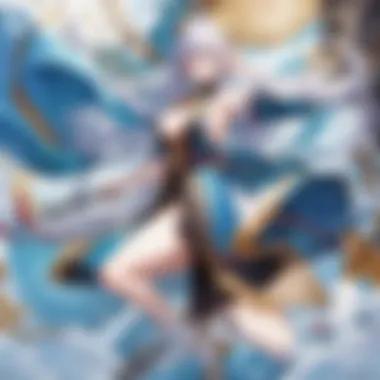

These features are significant in shaping the identity of manhwa, making it accessible and appealing to a variety of readers.
Themes and Tropes
Manhwa encompasses a wide range of themes and tropes that reflect societal issues, personal dilemmas, and deeper philosophical explorations. Common themes include:
- Romance and Relationships: Many stories center around romantic elements, navigating complex interpersonal dynamics from teenage crushes to mature relationships.
- Fantasy and Supernatural: Episodes often weave in fantastical elements, such as magic and mythical creatures, allowing for imaginative storytelling.
- Coming-of-Age Stories: A frequent trope in manhwa is the coming-of-age narrative, exploring the character's journey through adolescence, self-discovery, and personal growth.
- Social Issues: Recent manhwa increasingly tackle contemporary issues, such as mental health, societal expectations, and gender identity, offering a mirror to modern life.
These themes not only provide entertainment but also serve as a commentary on the socio-cultural environment in which they are created. Manhwa serves as a critical reflection of urban life and personal struggles prevalent in today’s society.
"Manhwa's unique features and themes offer a glimpse into both Korean culture and the contemporary challenges faced by its youth."
In summary, understanding manhwa involves delving into its rich cultural history, distinctive stylistic elements, and profound thematic concerns. This form of storytelling has morphed into an essential component of global pop culture, captivating a growing audience and expanding the landscape of visual narratives.
Comparative Analysis of Manga and Manhwa
The comparative analysis of manga and manhwa is essential for beholding the artistic and cultural frameworks inherent in these two unique storytelling forms. By understanding their differences and similarities, readers can appreciate the depth of each genre. Both mediums offer compelling narratives and visuals, yet they evolve within distinct cultural contexts. This analysis not only enhances the reading experience but also fosters a deeper connection with the creators and their works.
Visual Aesthetics
Visual aesthetics serve as a fundamental differentiator between manga and manhwa. Manga often showcases a more exaggerated style, with dynamic character expressions and fluid action sequences. The use of black ink against white paper provides a stark contrast that creates depth. In contrast, manhwa frequently employs softer lines and a more muted color palette, reflecting contemporary styling trends.
Readers may notice the panel layout can also vary significantly. Manga typically adheres to a right-to-left reading format, while manhwa is predominantly formatted for left-to-right. This distinction can influence how the artwork is perceived. Additionally, manhwa often incorporates more color pages than manga, which enhances visual storytelling and broadens the emotional range of scenes.
Reading Formats
The reading formats of manga and manhwa play a crucial role in user engagement and accessibility. Manga's traditional print format has traditionally dominated the market, though digital versions have gained traction. Many series are serialized in magazines before being compiled into volumes known as tankōbon. This format encourages readers to anticipate ongoing stories.
Manhwa has adapted more rapidly to digital platforms. Webtoon, for example, allows creators to publish their work in a scrolling format. This format is particularly suited for smartphones, making manhwa easily accessible for a global audience. The differences in reading formats not only impact storytelling but also how narratives unfold.
Audience Engagement
Both manga and manhwa possess unique avenues for engaging their audiences, but by different means. Manga often fosters a dedicated readership through serialized publications, allowing fans to grow attached to characters and plots over time. The cliffhangers at the end of chapters sustain interest and anticipation, fostering a community around upcoming releases.
On the other hand, manhwa benefits from immediate feedback through comment sections on digital platforms. This interaction enhances reader involvement, allowing creators to adjust their stories based on audience reactions. The conversational nature of this engagement can create a more personal connection between readers and creators.
In summary, the comparative analysis of visual aesthetics, reading formats, and audience engagement reveals the complexities that define manga and manhwa. Each medium brings unique strengths to storytelling, shaping the way narratives are perceived and appreciated by audiences around the world.
Genres within Manga and Manhwa
Genres are vital in understanding the broad spectrum that manga and manhwa offer. They provide structure and allow readers to find works that resonate with their interests. Each genre comes with its own conventions, themes, and audiences. From Shonen's action-packed narratives to the emotional depths found in Josei, genres influence storytelling methods and reader engagement. It also drives the commercial side, guiding publishers and creators on what to produce based on market demands.
Popular Genres in Manga
In the realm of manga, several genres have carved out dedicated audiences. One prominent genre is Shonen, which typically targets a young male demographic. These narratives often involve adventure, friendship, and personal growth. Titles like Naruto and One Piece exemplify this genre's characteristics, featuring young male protagonists who embark on journeys of self-discovery.
Shojo is another prevalent genre, aimed at young females. It often focuses on romance and character relationships. Works such as Sailor Moon capture the essence of the shojo genre, blending whimsy with teenage struggles.
Furthermore, Seinen and Josei cater to older audiences, with themes more complex than their younger counterparts. Seinen, such as Attack on Titan, offers intricate plots and darker themes that challenge societal norms. Meanwhile, Josei explores the everyday lives of women, often tackling personal issues, exemplified by works like Nana.
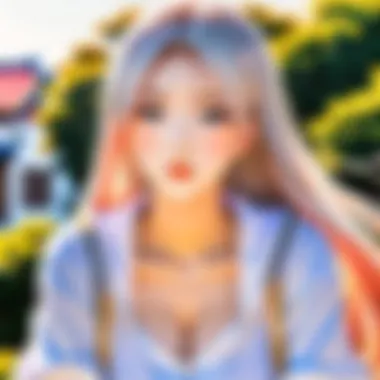

Popular Genres in Manhwa
Manhwa has its own thriving genre landscape, influenced by Korean cultural aspects. Romance is a leading genre in manhwa, presenting stories marked by emotional depth. Titles like True Beauty thrive on the reader's affection for character-driven plots.
Action and Fantasy genres also hold significant appeal. Manhwa such as Tower of God and Solo Leveling incorporate striking visuals while presenting epic adventures and power struggles. Furthermore, Webtoons, a digital-first format, have become increasingly popular. These bite-sized episodes attract readers with their accessibility and diverse stories, ranging from comedy to horror.
Emerging Genres and Trends
The landscape of manga and manhwa is not static. New genres frequently emerge, evolving alongside societal changes and technological advancements. For instance, the rise of Isekai, or alternate world narratives, has gained immense popularity. Stories like Re:Zero juxtapose modern life with fantastical settings, appealing to the escapism trend among readers.
Moreover, there is a growing trend toward slice-of-life genres within manhwa and manga, emphasizing daily experiences relatable to a modern audience. Series like March Comes in Like a Lion or Yumi's Cells reflect poignant moments in life, making them accessible to a broader demographic.
The Digital Revolution: Impact on Manga and Manhwa
The rise of the digital era has notably transformed the landscape of manga and manhwa. Digital platforms have made these art forms more accessible to audiences around the world. This section discusses how the internet and technology have reshaped the production, distribution, and consumption of manga and manhwa, highlighting both the benefits and challenges that come with these changes.
Digital Platforms and Accessibility
Digital platforms such as Webtoon, MangaPlus, and Crunchyroll revolutionized how readers access manga and manhwa. Previously, physical copies were the main source, limiting availability. Now, readers can enjoy vast collections online with just a few clicks. Notable advantages of digital platforms include immediate access to the latest episodes, translations in various languages, and often free options. This democratization of content encourages a wider audience to explore different genres and styles.
It's also important to note how platforms allow for indie creators to distribute their work without traditional gatekeepers. This can result in a diverse and rich array of stories that push the boundaries of conventional manga and manhwa.
Shifts in Consumption Patterns
The consumption patterns for manga and manhwa have drastically shifted due to digitalization. Previously, fans waited weeks or months to access new volumes. Now, many works release chapters weekly or bi-weekly, aligning with reader expectations for more immediate gratification. This shift encourages a more engaged readership that can discuss ongoing storylines in real time.
Additionally, the rise of mobile devices means that fans can read on-the-go. This convenient access to content allows for higher consumption rates. Readers can easily dive into multiple titles, which further promotes trends and common themes across different series.
Impact on Creators
The digital revolution also imposes new dynamics for creators. Artists and writers have the opportunity to reach global audiences instantly. However, this comes with both positive and negative aspects. On one hand, creators can build a large fan base quickly, which can lead to lucrative deals and recognition. On the other, the pressure to produce content rapidly may undermine artistic quality.
Furthermore, digital platforms often offer revenue-sharing models that can favor popular titles over more niche works. Creators might feel compelled to conform to mainstream tastes to ensure financial viability. This risk can compromise originality, although many independent creators are finding alternative routes through crowdfunding and Patreon-based models.
Cultural Significance of Manga and Manhwa
Manga and manhwa carry substantial cultural weight in their respective societies and beyond. Their significance goes beyond mere entertainment; they serve as reflections of social issues, cultural values, and even historical contexts. The depth of these forms helps in understanding Japanese and Korean cultures, as well as how they interact with the global community.
Influence on Japanese and Korean Society
The influence of manga on Japanese society is profound. It shapes youth culture by addressing current issues such as identity, love, and social norm alteration. Additionally, for many, manga is a primary source of cultural information. It introduces readers to Japanese traditions, folklore, and even language nuances. Notably, the popularity of shōnen and shōjo genres highlights the aspirations and challenges faced by young people. These narratives foster dialogue about personal and societal challenges.
In South Korea, manhwa serves a similar purpose. It often explores themes like societal expectations and romance but is known for its modern storytelling methods and impactful illustrations. As manhwa continues to evolve, it reflects the changing dynamics in Korean society and resonates deeply with the younger generations. Its journey from physical copies to digital formats illustrates how the medium adapts to consumer trends without losing its essence.
Global Reception and Adaptation
Internationally, both manga and manhwa have found extensive audiences. Their unique storytelling styles have led to various adaptations in other media, including anime and live-action films. These adaptations often introduce the narratives to new audiences, which enhances cultural appreciation.
Manga, particularly, has become a significant player in the global entertainment industry. The success of titles like "Attack on Titan" and "Naruto" highlights the global admiration for Japanese manga. In return, they often inspire local creators to produce similar content, elevating the quality of graphic storytelling worldwide. Meanwhile, manhwa has grown rapidly in recent years, with works like "Solo Leveling" gaining massive popularity. This surge points to an increasing trend of cross-cultural exchange in the realm of storytelling.
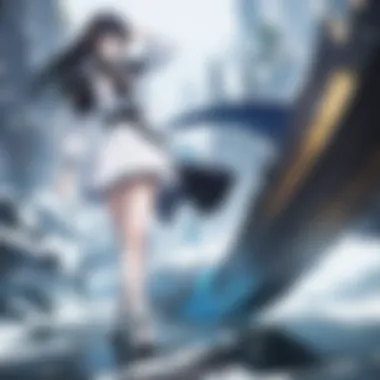

Manga and manhwa are more than just genres; they are cultural artifacts that deepen understanding between societies.
Role in Fostering Cultural Exchange
Manga and manhwa serve as conduits for cultural exchange. As Western audiences engage with these forms, they encounter diverse perspectives on the human experience. The digestibility of these art forms makes them accessible gateways for understanding cultural nuances. Additionally, fan communities thriving on platforms like Reddit and Facebook encourage discussions that enhance mutual appreciation.
The impact of platforms like WEBTOON has democratized access to manhwa, allowing for a broader voice in the artistic landscape. Prolific stories from South Korean creators gain traction, breaking through cultural barriers. Similarly, manga's adoption of themes that resonate with universal values paves the way for a deeper understanding between Japan and other nations. Therefore, the cultural significance of manga and manhwa extends beyond borders, marking them as vital components of global discourse.
The Future of Manga and Manhwa
The future of manga and manhwa carries significant weight in the broader context of visual storytelling. As cultural artifacts, they have evolved over decades, reflecting changing societal attitudes and technological advancements. Now, at the crossroads of tradition and innovation, both forms are poised for further development. The transformation of these media will likely affect how stories are told, distributed, and consumed globally. Recognizing the key trends, challenges, and innovations will allow enthusiasts to appreciate the continued evolution of these art forms.
Trends Influencing the Future
Several trends shape the future of manga and manhwa. Firstly, digitalization is a driving force. With more creators using platforms like LINE Webtoon and MangaPlus, access to content has greatly increased. Readers are no longer limited by geography; they can explore a vast array of series regardless of their location. This accessibility promotes a broader audience.
Secondly, there is an increase in hybrid genres. Creators blend traditional themes with contemporary issues. This results in narratives that resonate more deeply with today's audiences. Themes around mental health, identity crises, and socio-political discussions are becoming more frequent, giving rise to complex storytelling.
Thirdly, the globalization of these formats is undeniable. With translations and adaptations flooding the market, more non-Japanese or non-Korean work is gaining recognition. This diversification enriches the narrative landscape, allowing for cross-cultural storytelling that wasn’t previously possible.
Potential Challenges Ahead
While the future seems promising, it is not without obstacles. Piracy remains a critical issue. Unauthorized copies affect creators' revenues and undermine their willingness to innovate. Without adequate compensation, many may choose to exit the industry, affecting future content availability.
Another challenge is saturation of the market. With most creators turning to digital platforms, standing out becomes increasingly difficult. Quality diminishes as quantity rises. This can lead to a dilution of craftsmanship as stories become indistinguishable from one another.
Finally, changing audience preferences represents an ongoing challenge. As visual media evolves, tastes shift. What appeals today may not resonate tomorrow. Adapting to these changing demands without losing core identities is essential for both manga and manhwa.
Innovations in Storytelling
The realm of storytelling within manga and manhwa is undergoing an exciting transformation. Interactive content represents a new frontier. This allows readers to influence story outcomes, making engagement more profound. Platforms are experimenting with formats that elevate reader immersion.
Moreover, the integration of augmented reality (AR) is garnering attention. Some creators are exploring how AR can provide additional layers of storytelling. Readers can experience scenes beyond the pages, enhancing emotional connections with characters and narratives.
Additionally, the focus on diversity in narratives continues to increase. More creators from varied backgrounds are entering the scene. Their perspectives are essential in enriching storylines, making them more relatable and engaging to a global audience.
Overall, the future of manga and manhwa appears complex yet vibrant. The trends, challenges, and innovations not only promise to reshape storytelling but will inevitably influence how audiences interact with these beloved art forms. Understanding these dynamics is crucial for enthusiasts and creators alike as they navigate this evolving landscape.
The End
The exploration of manga and manhwa is not just an academic endeavor; it holds significant relevance for understanding contemporary visual culture. This article synthesizes key aspects of both genres, revealing their unique characteristics, evolution, and the impact they have had globally.
Summary of Key Insights
This discussion highlighted important elements such as:
- Historical Context: The roots of manga in Japan and how manhwa developed in Korea reveal much about their contrasting cultural narratives.
- Artistic Styles: The distinct artistic choices illustrate differences in cultural expression and audience expectations.
- Narrative Structures: Both forms exhibit rich storytelling methodologies that cater to a wide range of themes and emotions.
- Cultural Significance: The roles these art forms play in their respective societies underscore their importance not just as entertainment but as cultural artifacts.
- Digital Evolution: The impact of digital platforms has transformed how audiences consume manga and manhwa, making these art forms more accessible.
In essence, the intricate universe of manga and manhwa provides insight into broader trends in society, technology, and art.
Final Thoughts on the Genres
As we conclude this in-depth exploration, it is clear that manga and manhwa are more than mere entertainment. They serve as reflections of cultural shifts, societal values, and technological changes. With the rise of digital mediums, the future holds new possibilities for storytelling in both genres. Understanding these forms is crucial for enthusiasts and scholars alike, as they continue to evolve and impact the global entertainment landscape. More than ever, fans and new readers alike can contribute to this vibrant dialogue.
"Manga and manhwa are not just comic books; they are lenses through which we can view cultural dynamics across the globe."
The continuous growth of these genres shows their lasting appeal and the importance of recognizing their contributions to global culture.
